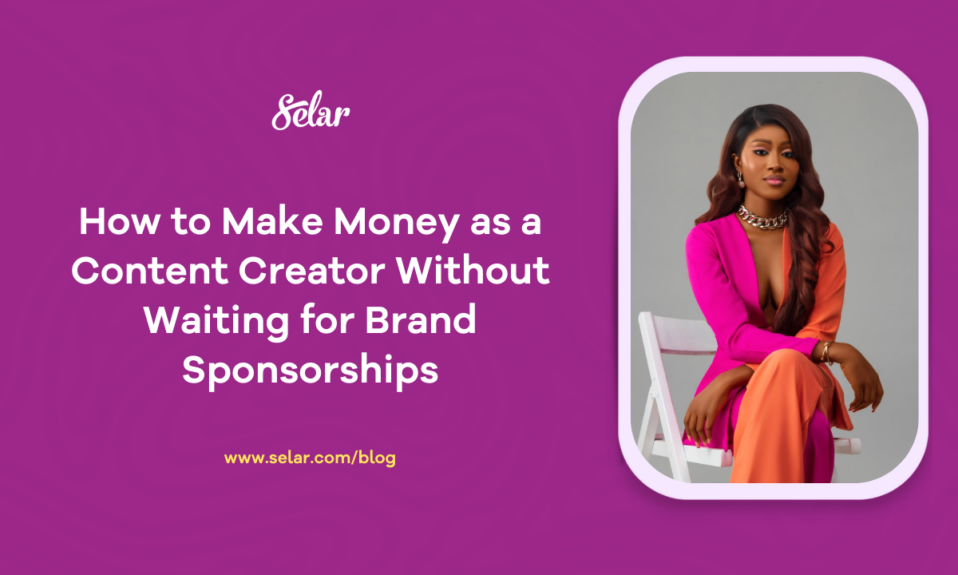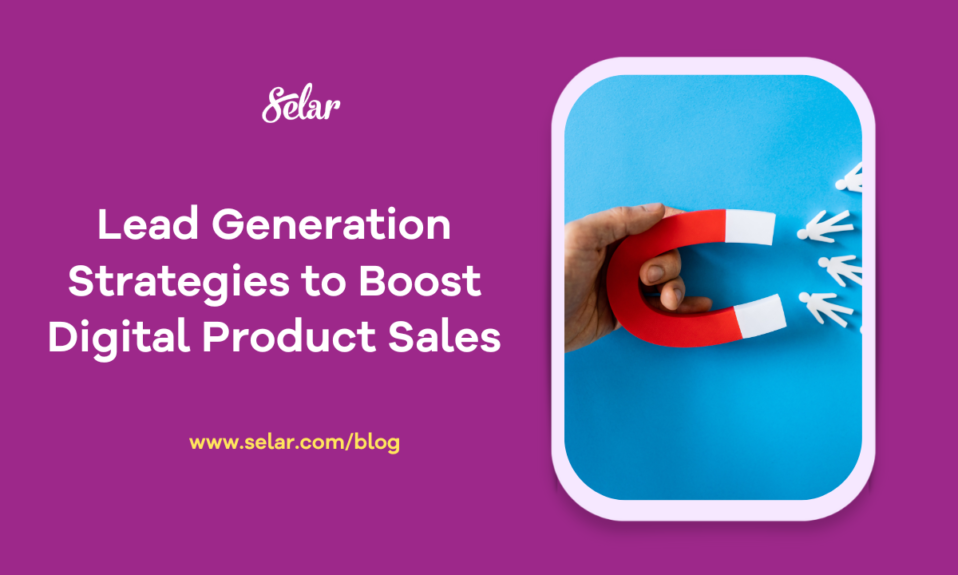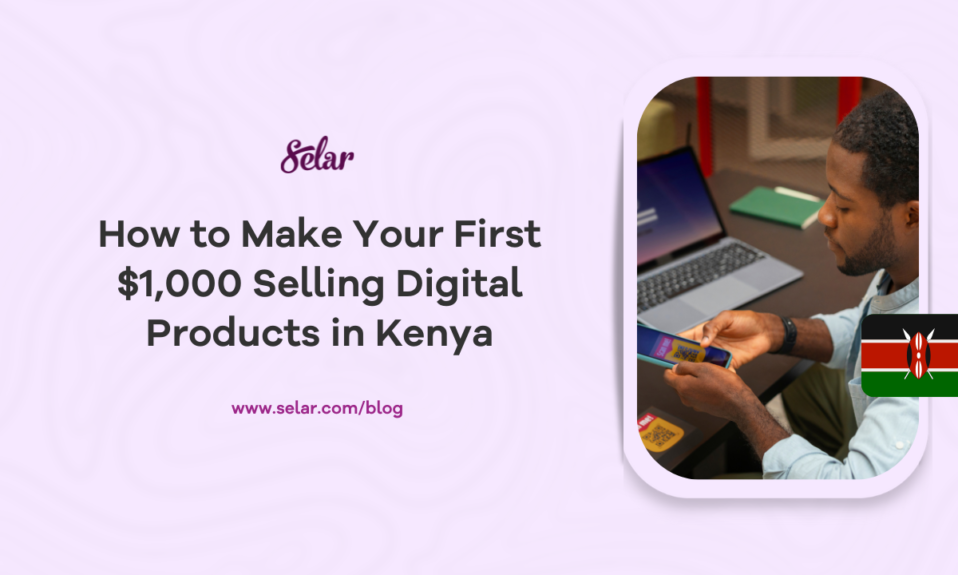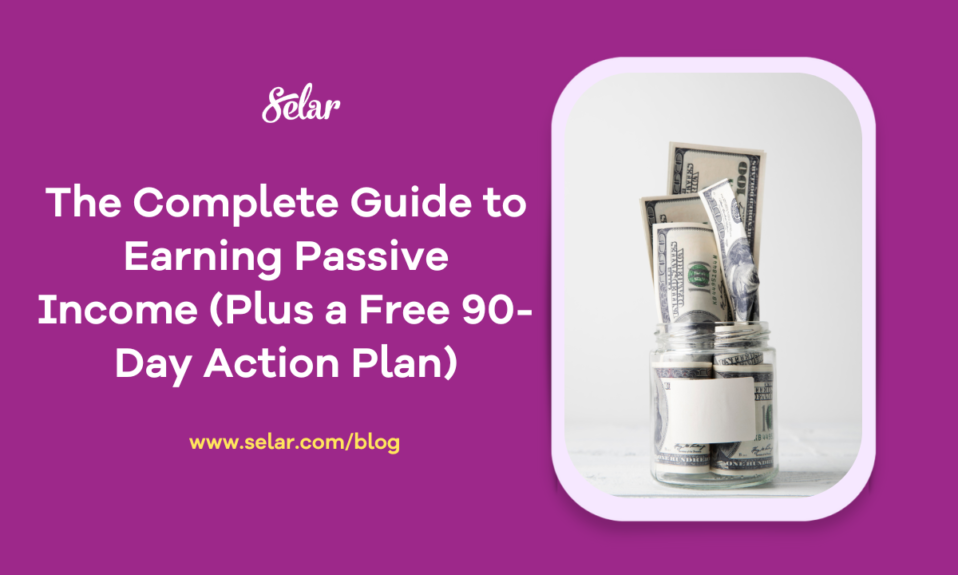
How to Make Money as a Content Creator Without Waiting for Brand Sponsorships
Getting brand deals as a creator is great until they’re not. They’re hard to predict and usually reserved for creators with massive followings. So what happens if you’re just starting or if you’re done waiting?
That’s exactly what this webinar was all about. You can catch the full replay on YouTube.
We had a conversation with Vee Betran, also known as Productive Vee—a content strategist and growth specialist who has helped thousands of creators, coaches, and entrepreneurs turn their content into income. Vee doesn’t just teach content creation; she teaches how to make it pay, with practical strategies, simple systems, and a clear focus on long-term growth.
In this session, Vee broke down:
- Why brand sponsorships alone are a trap
- How to start earning even with a small audience
- What products and services creators can sell right now
- And how to build a monetization plan you can stick to
Whether you’re a new creator, a small business owner trying to monetise your platform, or someone finally ready to take affiliate marketing seriously, this recap is filled with practical insights you can apply immediately.
Let’s go into the full conversation. Grab a drink, you’re gonna want to take notes.
Q: Going back to how you started your journey, can you tell us how you got into content creation?
At first, I was just posting mini vlogs. I already knew how to use editing apps, so I’d throw together a couple of clips from my day. I wasn’t chasing numbers; I just wanted to document what I was doing.
Then one day, I started paying attention to how international creators were editing their content. Their videos were super clean and very appealing, and I noticed they were getting a lot of traction. But I wasn’t seeing that same energy from Nigerian creators at the time. Maybe it existed, but it hadn’t hit my radar yet. So I thought to try it and see if people vibe with it.
And that first attempt, it blew up. The content went viral. I didn’t plan to go viral, but it was still intentional. I wanted to test the waters and see if my audience would respond, and they did. That’s really how it started. Kind of accidental… but also not.
Q: Now, let’s talk money. Has there been a time when you made money from content outside of brand sponsorships? What was that like?
Definitely. I remember asking myself early on, “Okay, people are following me, now what? How do I monetise this audience?” Brand deals were the first thing that came to mind. That’s what everyone talks about, right? But I also knew it wasn’t sustainable. You’re just waiting and hoping a brand reaches out.
Meanwhile, nobody was really talking about making money directly from your audience. So I started paying attention. People were showing up in my DMs not because I was selling anything, but just asking questions: “Can you teach me how to do this?” or “Can you help me with that?”
That felt like an opportunity. So, I started a class. It was free at first, just me helping people. Then I realised, this is valuable. People want to learn this. That’s when I monetised it.
That’s really how I started earning without relying on brand deals. What are people already asking you for? That’s where the money is. You don’t need a big brand, you need a product your audience already wants.
Q: You already mentioned a few things that worked, but if you were to summarise the experience, what flopped and what worked really well?
Honestly, nothing major flopped. But if I had to pick one thing, it would be follow-up.
After I hosted the free session, I had over 5,000 people who showed interest. But when it came time to promote the paid version, I wasn’t consistent. I didn’t keep reminding them, no emails, or extra posts, nothing. As a result, not all 5,000 were converted.
So yeah, that’s what flopped, just not having a follow-up system in place.
What worked? I nailed the offer. I paid attention to what people were already asking me for, and I created something around that. I knew my audience, and I stayed focused on solving their exact problems. That made everything else easier.
Q: Let’s say someone wants to start making money from their audience and knowledge, just like you did. What’s the first step you’d recommend?
Build a personal brand, but don’t stop there. You need a system behind it that’s built to earn.
People connect more with personal experiences. So if you can share something real, something from your own life that resonates, you already have their attention. The next step is turning that into something they’ll pay for.
That’s where the system comes in. It doesn’t mean posting randomly or going viral once. But having something in place that works behind the scenes. That’s what pays you consistently.
So yeah, build the brand, but also build what sits behind it. That’s where the money is.
Q: I love that you keep saying “systems.” But for a creator wondering, “What does that mean?” Can you break it down?
Yep—let me give you some examples. Let’s say I’m a videographer, and I use editing tools all the time. How do I build a system around that?
First, I pick one of the tools I already use and love. Then I check, does it have an affiliate program? If yes, I sign up and get my unique affiliate link. Next, I create content around it, maybe a tutorial, or just a short video showing how I use the tool in my workflow. Then I add a simple call to action, like: “If this helped you and you want to try the tool, the link is in my bio.”
That’s the system.
I’ve told a story, offered value, solved a problem, and added a link where they can take action. And I’m still showing up like a regular person, not selling hard. You can even make it more casual: “Comment the word EDIT and I’ll send you the link.”
That feels more personal, and people are way more likely to follow through. The best part is that once that content is live, it keeps working for you even while you’re sleeping.
Q: I love how you just broke it down: tell a story, give value, link the tool, and make it easy to earn. That’s literally a business funnel.
Exactly! And people think funnels are this complicated thing, but they’re not. It’s just being intentional with how you share what you already use.
When people feel like you’re not trying to sell to them, they trust you more. And trust leads to action. That’s the whole point: serving, not selling.
Q: Let’s go deeper into the affiliate side. There are so many products out there. How do you choose what to promote?
Honestly, I only promote what I’ve used or at least tested properly. Even if a brand is offering big money, I can’t do it if I don’t believe in the product. Because once you break trust with your audience, it’s really hard to earn it back.
So for me, it has to check a few boxes:
- I use it (or have used it)
- I know it works
- It fits the kind of content I already create
If I’m all about productivity, it makes sense to share tools that help people stay productive. It wouldn’t make sense to randomly promote skincare just because the commission is high. That just confuses people.
So yeah, use it, test it, believe in it, then promote it.
Q: That’s such a good point, it’s not just about the money, but the long-term trust. That’s what really makes your audience stick with you.
Exactly. And people can smell desperation. If you’re dropping affiliate links all over the place just because you want to make money, they’ll pick up on it. That’s when engagement starts to drop. But if it’s something you use and believe in, your audience will see that too, and they’ll be more likely to trust your recommendation.
You also have to protect your reputation. If you’re promoting Product A today and suddenly switch to Product B tomorrow with no explanation, people will notice, and that creates doubt.
That’s why I always say: pick products that don’t contradict your message. If it goes against what you normally talk about, it starts to feel like you’re just lying online. And nobody wants to follow someone who feels like they’re just chasing the bag.
Trust is everything. Once you lose it, it’s hard to win back.
Q: You’ve worked with different types of digital products. In your experience, what sells the fastest — courses, ebooks, or templates?
Definitely courses and live sessions. I haven’t done much with ebooks, but if we are honest, not everyone enjoys reading. Even I don’t love reading bulky stuff. Just give me a video and I’ll watch it a hundred times.
That’s why I focus on things like live cohorts and structured courses, formats that take people on a journey. You can run them live (like “Day 1 we cover this, Day 2 that”), or pre-record them so people can learn at their own pace.
Some people also want mentorship, so it depends on your audience. But from what I’ve seen, courses and cohorts are fast sellers.
Q: And what about content formats? What works best when promoting those kinds of products?
Good question! It’s not just picking but knowing when to use each.
- Use tutorials when you want to show how something works. People need to see it in action.
- Use storytelling to build a connection. Share how the product helped you; that’s what makes it relatable.
- Use reviews to build trust. Show what others have achieved using your product or service.
- Use lifestyle content to inspire. Let people imagine the product in their daily lives.
So:
- Teach with tutorials
- Connect with stories
- Convince with reviews
- Inspire with lifestyle
Use all four, but be intentional.
Q: Last one for this section, how do you avoid sounding too salesy when plugging affiliate links? Because let’s be honest, nobody wants to feel like they’re watching an ad.
First, shift your mindset from selling to serving. If you lead with “How can I help?” instead of “How can I sell?”, your content instantly feels more genuine. You’re not just saying, “Buy this.” You’re saying, “Here’s how this helped me and here’s how it can help you too.”
Let them see the value through your experience. That’s what builds trust.
Because at the end of the day, most people don’t buy because you told them to. They buy because they saw themselves in your story. That’s what makes your content land and your affiliate strategy work.
Q: Let’s talk about the flip side. What are some common mistakes you see creators make when trying to earn through affiliate marketing, especially outside of brand sponsorships?
Creators posting content with zero context. Let’s say I want to sell this lip gloss. And I come online and say: “This lip gloss will stop your lips from cracking. Use the link in my bio to buy.” That’s not marketing but a cold pitch.
Especially in affiliate marketing, many think success means shouting “Buy this!” every day. It doesn’t. It’s more like: I’m trying to sell you this bottled water, not by shouting “buy it,” but by showing you why it is needful. You have to tell a story. Let me give you a proper example.
Let’s say I got a rash from using a roll-on deodorant. I make a video saying:
“Guys, this Nivea roll-on gave me a horrible rash. Please recommend something better.”
Now people will engage. They’ll comment things like “Try Dove,” “Dove works for me.” That’s engagement. You could even get your friends to drop those first comments to get the ball rolling. Use multiple accounts if you have to, so it feels organic.
In your next video, I’m saying, “Guys, so many of you recommended Dove in my last video, so I’m trying it out. Let’s see how it goes.” And maybe Dove is actually the product you’re affiliating with.
Go further with a personal story: “I had such a rough day looking for this thing, went from market to market, fell into a gutter, bruised my leg just to find it!” That kind of storyline is what gets people attached. Then follow up with:
“Because it’s hard to find, I stocked up. So if you want to get it easily, just use my link.”
You’re solving a problem for them. And maybe a week or two later, do a follow-up:
“Guys, remember when I had that rash? Here’s my underarm now. This Dove roll-on really helped.”
That before-and-after builds trust. You don’t even have to make it the main focus. Just slip it into your Get Ready With Me or daily vlog: “By the way, this is the roll-on I told y’all about.”
People will remember. That’s how affiliate marketing works. You don’t have to force it. Just feature the product naturally in your content.
People who want it will buy it. People who don’t, won’t.
Q: Now, let’s say someone has already made their first ₦100K or $100. They’ve started seeing progress. How do they scale from there, double or triple their income?
Start by setting a new goal, ₦500K, $1K, then ask: What systems will get me there? Double down on what’s working. When content performs well, make sure it has a clear CTA. If it’s already gone viral, no problem. Turn it into a funnel by:
- Pinning the post
- Adding a CTA in the caption or comments: “Click my bio link” or “Comment XYZ and I’ll send it”
People read pinned comments, so use them. Automate your affiliate links and make it easy to buy. You don’t need to be everywhere; just set up systems that let your content work for you. Also:
- Create digital products that solve deep problems
- Build an email list and follow up
- Use WhatsApp groups intentionally.
- Share value, check in with people, but don’t spam
Not everyone will buy, but the right systems will help the right people say yes.
Q: OK, I really love the conversation we’ve had, and my final question would be what’s something that creators who want to build a profitable business from their brand should stop doing immediately because it’s hurting their chances of making money?
Stop chasing trends without purpose. Just because something’s viral doesn’t mean it’s right for your business. Every post should serve a goal, whether it’s to drive traffic, build trust, or highlight a problem your product solves. Don’t just post to go viral, post with strategy.
Ask yourself:
- Is this helping my business?
- Does it align with what I want to be known (and paid) for?
A viral post without a plan won’t pay you. But content built around value, education, and intention will. Popularity is nice, but strategy is profitable.
Q: Alright! To wrap this up, because this has been such a great session, if you had to introduce affiliate marketing to a creator who’s never heard of it before… How would you explain it in one sentence?
Affiliate marketing is simply sharing what you use and love, so others can buy it too, and you earn a commission when they do. We already do it offline. For instance, your mom likes your scarf, so you tell her where to get it. That’s a referral.
Or she sends you to buy something, you bargain and keep ₦3K for yourself, that’s commission. Now we’re just doing the same thing online with content.
Some of the key things Vee shared include;
- Post with strategy
- Monetise what your audience is already asking for.
- Start with free sessions or resources, then transition to paid offers.
- Sell knowledge: create classes, live cohorts, or recorded courses.
- Focus on solving clear problems, not just selling generic products
- Stop chasing virality, focus on intention
- Affiliate marketing is part of everyday life
- Only promote what you’ve used or tested.
- Make sure the product aligns with your usual content and message.
- Protect audience trust—don’t jump between products just for higher payouts.
- Embed affiliate links naturally into your content
The beauty of affiliate marketing is that your audience can become your marketers, too. They can use your link or even become affiliates under your link. It’s a whole cycle.
As long as there’s something to sell, affiliate marketing will keep working. It’s still one of the fastest ways to make money as a creator, and most of us are still sleeping on it.
If you’re ready to start, you can join Selar’s Affiliate Network today for just ₦3,000 for the entire year.








